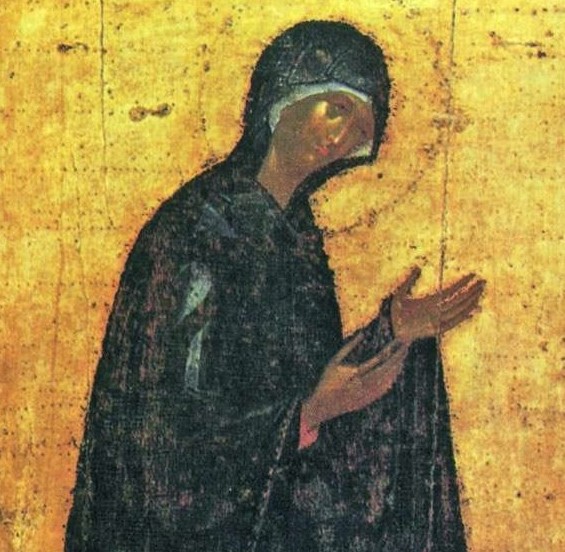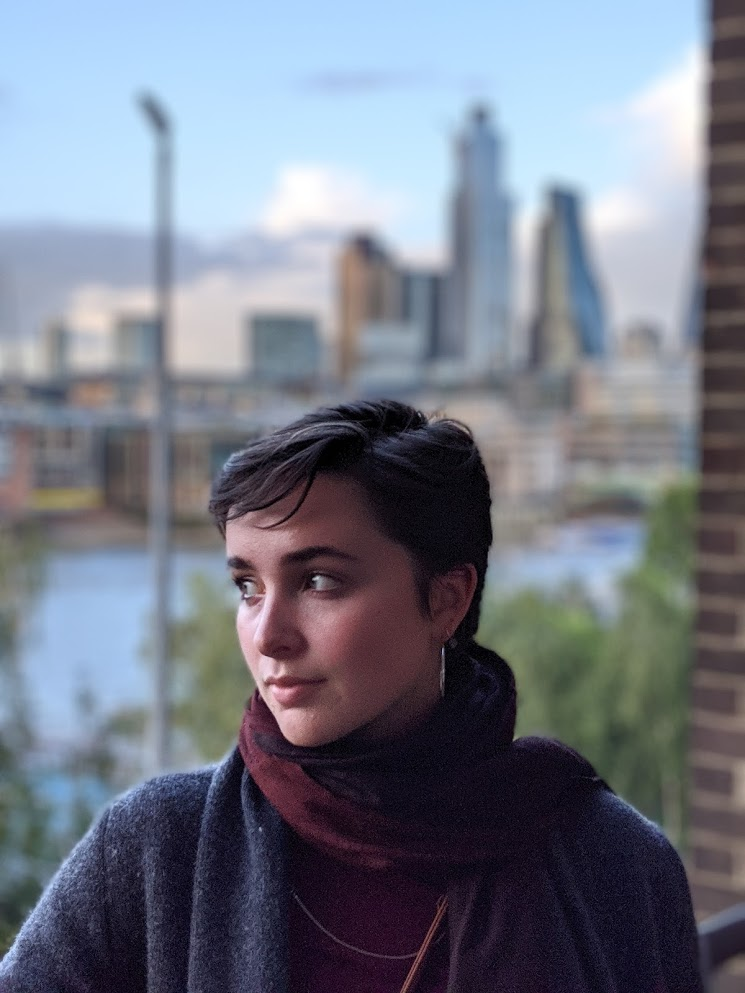
Since praying is one of the cornerstones of Orthodox spirituality, we are always on the lookout for ways to get better at it. This week’s blogger developed her prayer rule in an unexpected place. She has found a practice that works for her even while she, like all of us, is confronting these uncertain times. Are there ideas here that could work for you?
I was taught that the practice of prayer is an integral part of how I, as a believer, practice the Orthodox faith. Church school gave me the sense, as a kid, that I had this immense obligation to incorporate prayer into my daily life at least morning and night. And yet, no one ever taught me how exactly to pray! This carried over, of course, into my adult life. The most I was told was that prayer should be a conversation with God. I knew pre-written texts and prayers existed. However I prayed, I felt like I wasn’t doing it correctly: like I was just talking either to myself, full of self-doubt, or straight into a wall. The main reason I prayed was so I wouldn’t feel guilty about not doing so. The formulated prayers didn’t often feel like they exactly applied to me and weren’t in a vernacular I used to communicate with anyone, especially as a kid. It made talking to or with God feel very formal and distant. I also didn’t want Him to feel almost duty-bound to provide services just because I prayed a little extra, more earnestly, or at all that day. After a while, I stopped praying.
With so much emphasis placed on personal prayer and seeing personal prayer as mainly an internal matter, it was easy to feel alone in this: like everyone except me had it figured out already. However, when I finally got to asking about it as an adult, I found that many other people who practice the faith can sometimes see prayer as an obligation to be fulfilled at certain times of the day, often reciting predetermined prayers formulaically. I realized; a lot of people feel a huge amount of pressure around prayer.
And there I was stuck until I got to college. Mind you, I attended a secular liberal arts school. It was there, however, I first encountered hesychasm--in my required reading. In my second semester, I enrolled in a course called “Eastern Christianity” with Professor Vera Shevzov. Hesychasm, which is an ancient practice, changed my views on what prayer can be. Classically you only hear about it in monastic contexts. Though it’s clearly not just for the tonsured, because it revolutionized the personal life of an eighteen-year-old college student.
Hesychasm (translated literally to “stillness”) begins with breathing techniques. It aims to help turn prayer into a physiological act. It caused much controversy when it first appeared in Byzantium. People asked, “How can you reach God if you are focusing so much on yourself?” I, too, questioned this at first. It felt selfish, even arrogant. But the more I thought, the more it made sense. After all, the Kingdom of Heaven resides within us, right? Maybe hesychasm could be a way for me to access it, especially if I could achieve acceptance and incorporation of the temple God had given me. (Still working on that one!)
Even in a society focused on externals, we are beginning to realize that we have to prioritize our internal needs. No wonder the terms “mindfulness” and “meditation” seem to be trending these days. They always attracted me, too, and I succeeded with it, though it left me wishing for a version that could connect me more with God. Discovering that wish fulfilled within Orthodoxy felt like the missing piece.
Hesychasm is an accessible and genuine form of prayer. All you need is your own mind, body, and soul. Maybe one day the Kingdom of Heaven inside me will also become always accessible, always present in my life. . Then I will be able to lead a prayerful life, inwardly and outwardly.
The foundational technique of hesychasm involves simply sitting. Once you achieve a calm, seated posture, you then focus both your physical eyes and your mind on the center of your stomach (which the ancients believed was the source of energy/life). You then control your breathing, to eventually rest your mind in your heart. Once you’ve managed those, the next step is to search to find your soul, which resides in your heart. This all takes time and practice. The Philokalia itself expects you to find much turmoil and darkness here, which may seem impermeable, but with invocation of Christ’s name, along with consistency, this darkness is “burned up.”
The second part of hesychasm involves unceasing prayer, which I learned through The Way of a Pilgrim, more of my required reading. In this story, the unnamed pilgrim learns to pray unceasingly starting with physiological prayer, hesychasm, focusing on the Jesus Prayer, a short, simple sentence. Lord Jesus Christ, Son of God, have mercy on me, a sinner. He taught me that through the invocation of Christ’s name, God would always come first in whatever I think and do.
It sounds simple--breathing and repeating a few words--but it remains a simple feat that I predict will be my life’s work. I lead the life of neither pilgrim nor monk, who work for the same. However, I have come to realize that I can indeed invoke the same unceasing prayer through my thoughts and my intentions, in the hope that I can bring the Kingdom of Heaven inside me to the forefront of my soul--and thereby permeate my actions. Perhaps I can achieve this in my own, everyday way.
Hesychasm has helped this “prayer is a conversation with God” thing make sense to me. Prayer is an opportunity to interact directly with what is both within you, and every other living being. If that’s not the Kingdom, I don’t know what is. It exists everywhere around us, as Christ Himself teaches. As long as we are interacting with the world like this is precisely true, then we are praying unceasingly.
For me, seeing prayer this way makes more exceptional prayers, like asking for healing, salvation, or help finding my keys, a request between two beings that have a real, working relationship with one another. And to me, that makes it feel less transactional and more genuine. I hope it also brings me more into alignment with God’s will, so that mine and His can become one.
An ancillary benefit to all this hesychasm is that I now also feel that I find those pre-written prayers more useful. I have been able to locate prayer within my own soul, my own body, and I have added understanding and contexts of the prayers’ wordings and teachings. I finally embody them myself, and genuinely pray through them. Singing in my church choir now feels like an embodying of those prayers as I incorporate body (through my vocal chords, my lips) and soul/mind (through understanding and inner light).
Hesychasm is not the final answer. For me it has been a beginning--a beginning I have to repeat fairly often. Depending on where I am externally or internally, maintaining these practices can be rather difficult. I am still in the middle of some serious soul-searching, so to speak. I only just graduated college after eight tumultuous semesters filled with travel, sojourns abroad, several changes of my major, and working through various relationships. Though unceasing prayer takes constant work, and my introduction to it was challenging, the brief periods of time when it gives me calm, freedom from anxiety, and purpose feel most genuinely like “me.” These are the times that I align most with God’s will. These modes take the least amount of energy, and are the easiest to exist in. That is how I know prayer is true, and real in my own life, though I have a long road ahead to achieve ceaselessness.
Elizabeth Bouteneff, who recently graduated with a degree in Russian studies and urban studies, is Axia Women's summer intern, engaged in research, data analysis, and writing.



